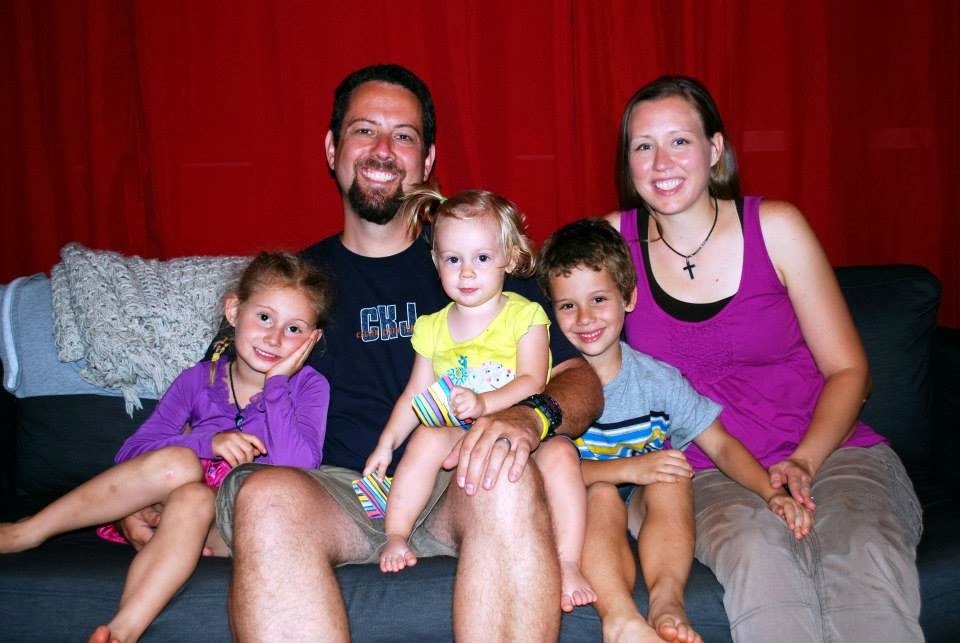On September 24th,
I (Andy) was able to make contact with a small Malagasy people group located on
the Southeast coast of the island, called the Antambahoaka.
 |
| Mananjary |
Leaving the
central plateau of Madagascar and entering the rainforest along the East Coast
was a beautiful sight to see! We were not able to see all of the rain forest,
merely drive through, but Jeremy, my boss, said, “it is a typical rainforest
with the high canopy and animals” (including the many species of lemurs, frogs,
snakes, birds and also fossa). The first
leg of our trip took about 12 hours, which brought us to the hotel where we
stayed. The next morning we made our way
to the town of Mananjary,
about a 2.5 hour drive from our hotel and explored the town and the surrounding
area for 2 days. I was surprised that
the town was probably less than 20% of the size of Antsirabe (the city we lived
in for language), but there was still a good bit of tourism there. Also in comparison to the plateau there was
very little to no rice fields and a lot fewer cattle (zebu).
 |
| The people listening to the gospel |
After that we
found a large village just north of town called Amboanato (about 850 people
lived there). The women wore more
traditional dress (a lamba; a piece of cloth used to wrap around the woman’s
lower half of her body like a skirt) and the people looked similar to the
people on the plateau in their facial features, but with darker skin tone (approaching
the look of what people see as traditional African people). The people were welcoming and friendly and
tried to help us find our way around as well as answer some of our other
questions.
As we entered the village, a large
meeting of the local chiefs, and government leaders, was finishing-so we were
able to meet with 10 (or so) of the local leaders (with many other onlookers
through windows and doors). Mostly we
spent time listening to them talk about their people and culture. At the end of our time, they invited us to
come back the next day. God truly went
ahead of us to pave the way for us to be able to meet with so many influential
people in this area!!
One thing the
Antambahoaka shared with us was about one of their customs,
a ceremony called the Sambatra that
they perform every 7 years to circumcise any
previously uncircumcised males.
There are many aspects to the ceremony, including
setting the male child on the head
of a bull after the bull has been decapitated and then
pouring holy water in a circle on
the ground around him.
 |
| Jeremy talking about the wide & the narrow path |
On our second day
in the village, I was a little surprised that the people answered question
after question about who God is, who Jesus is, and what He has done. The person
who knew the most, and spoke the most, was drunk. 2 Timothy 3:5 says that many
people “hav[ing] a form of godliness but deny[ing] its power.” In much the same way, the people of Amboanato
knew a lot of the ‘right answers,’ about God—but they did not appear to really
know God. Many seemed to mix a little of
one religion (such as Catholicism) with ancestor worship, feeling like they
have not offended anyone while still satisfying their ancestors! But Praise God, it is not up to us to save
them, but we were faithful to share with them the truth of the gospel and we
are praying that it will take root in their hearts!
 |
| "lakana" |
Other Facts from the trip:
Common mode of transportation: a few taxi “brousses” (buses), but
mostly many “lakana” (boats) are used to travel up & down the rivers &
canals
 |
| Man making a fishing net |
Common livelihood: Fishermen (mostly in the ocean, but some in the
rivers & canals); Charcoal makers
 |
| Making charcoal |
 |
| Children playing a game |
 |
| Homemade drumset |

